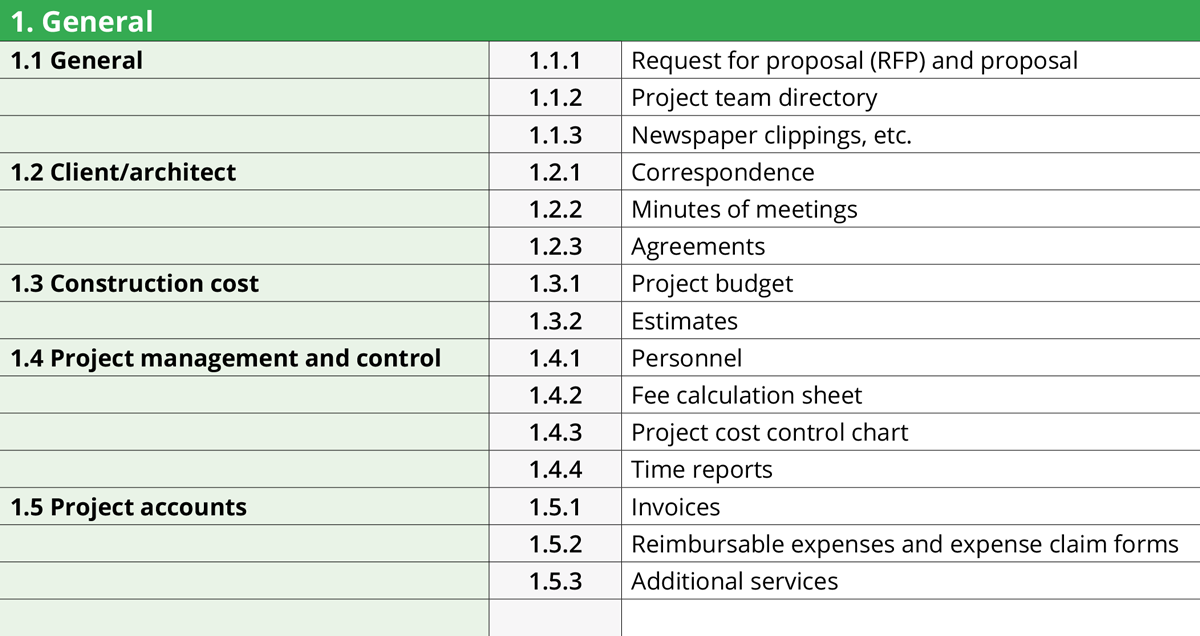A project information management system is most effective when designed to address the following needs:
Multilevel:
- The organization of information is hierarchical, allowing both large and small projects to use the same high-level headings but cascade into finer and finer subcategories as the project size and complexity increase.
Consistent narrative:
- Information about a topic, regardless of format or media, is consolidated within the same family of categories and subcategories; i.e., all information about the curtain wall design, or whether a letter, sketch, or cost estimate notes can be retrieved easily.
Searchable:
- In an electronic format, information can be searched, located and retrieved.
Multi-user:
- Information is categorized in an order that all project participants can understand, regardless of their role in the project; i.e., the architect, technologists and administrative staff share the same understanding of the information structure.
Consistency:
- Although each project creates a unique outcome, as far as is practical, the project information structure is similar across projects, enabling lessons learned by a project team from one project to be easily retrieved by another.
These needs can be effectively addressed by using the project’s hierarchical and multi-scalar work breakdown structure as the basis for project information organization.
An Example of a Project Information Organization System (Phase-Based)
Click for Full PDF Table

